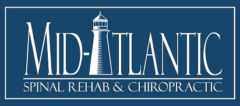Can You Waive My Copay?
As my avid blog readers are already aware, I am a Baltimore Chiropractor with two offices in Baltimore City. Both of my offices focus on providing the best Chiropractic care in Baltimore City and the surrounding Baltimore County. We are happy to treat anyone with headaches, neck pain and back pain. Most of the time my providers and I are able to reduce or eliminate the symptoms of pain and suffering in our patients. When we can not, or if a patient has a condition that is outside the scope of our practice to treat, we refer these patients to other qualified healthcare professionals.
One of the questions that gets asked a lot in my clinics is a question surrounding co-pays. Copays, or co-payments, are the payments that a patient has to make at the time of service so that the provider can see them. Depending on the health insurance plan that a patient has, these copays can range from $10 to $50 per visit. So if we end up seeing a patient 2-3x/week for an acute injury the out of pocket cost for this patient can be anywhere from $20-100 or more per week. I am aware that given the high premiums that we all already pay for health insurance that an ADDITIONAL $20-$100 per week can be a large burden for a patient who just wants to have their pain eliminated so that they can go back to their normal activities of daily living. That is why we seek to eliminate pain and restore function in our patients as quickly as possible – time and money are both limited and we do our best to save our patients both.
What patients of our Baltimore chiropractic offices likely do not know or understand is that a copay is not determined by the chiropractic or doctors office that is collecting it. Instead, a copay is determined by the health insurance company. That is, we as providers have no control on what your copay is, or for that matter, whether or not we can collect it.
When a patient signs up for health insurance (whether it be through a group plan at work, or on the individual market), they sign a contract that details everything that the health insurance company will pay for and everything that it will not pay for. In the fine print it also says what the copay and deductibles for any given plan will be. As healthcare providers who provide care for these patients and then bill these third party insurances, we ALSO have a signed contract with these same health care plans. Our contracts FORBID us from routinely waiving copays on behalf of their insureds. That is because they want patients to have a financial stake in the game when it comes to receiving health care benefits. It stands to reason that the patients will be more selective about spending money for health insurance purposes if they have “skin in the game” and have to pay a copay on each visit.
There are circumstances around which we can waive a copay- but these are largely financially based and the office would have to have the patient fill out a “financial hardship” waiver. We have done that from time and time and are happy to do so when the situation arises. However, we can not simply waive a copay because a patient wishes to not pay for it. Nor can we waive a copay because you are a pleasant patient who has been receiving treatment on and off in our facility for years. Doing so would harm the insurance company and would potentially put the healthcare provider at risk for losing its contract with a health insurance provider. That is not something that I feel comfortable with.
While I can appreciate patients, or for that matter, prospective patients who tell me that “their chiropractor out of state” would routinely waive their copay, I usually tell them the same thing. I explain as I did above that we are legally obligated to collect the copay from the patient at the time of service. I also explain that if they can’t afford it, I would be happy to have them fill out a “financial hardship waiver.” I further explain that if having my office collect their copay makes it unappealing for them to present for care then I do not wish to see them as a patient, and I wish them luck seeing treatment elsewhere.
If you have health insurance it is relatively easy to find out if you would owe a copay for chiropractic services in Baltimore City and Baltimore County. You can even call the front desk staff at each of my offices and ask them to check for you. They would be happy to do so. However, if it is determined that you owe a copay my staff and I can not just waive it for your because you ask nicely. Doing so is a violation of a health insurance contract and could be met with fines for the office. We would be more than willing to take great care of you, but only if you meet your end of the bargain and pay your copay.
If you have questions about copays and whether or not you would have to pay a copay at the time of your Chiropractic evaluation in Baltimore, please call my front desk at 443-842-5500. The staff would be happy to answer any questions that you have.
Dr. Gulitz

